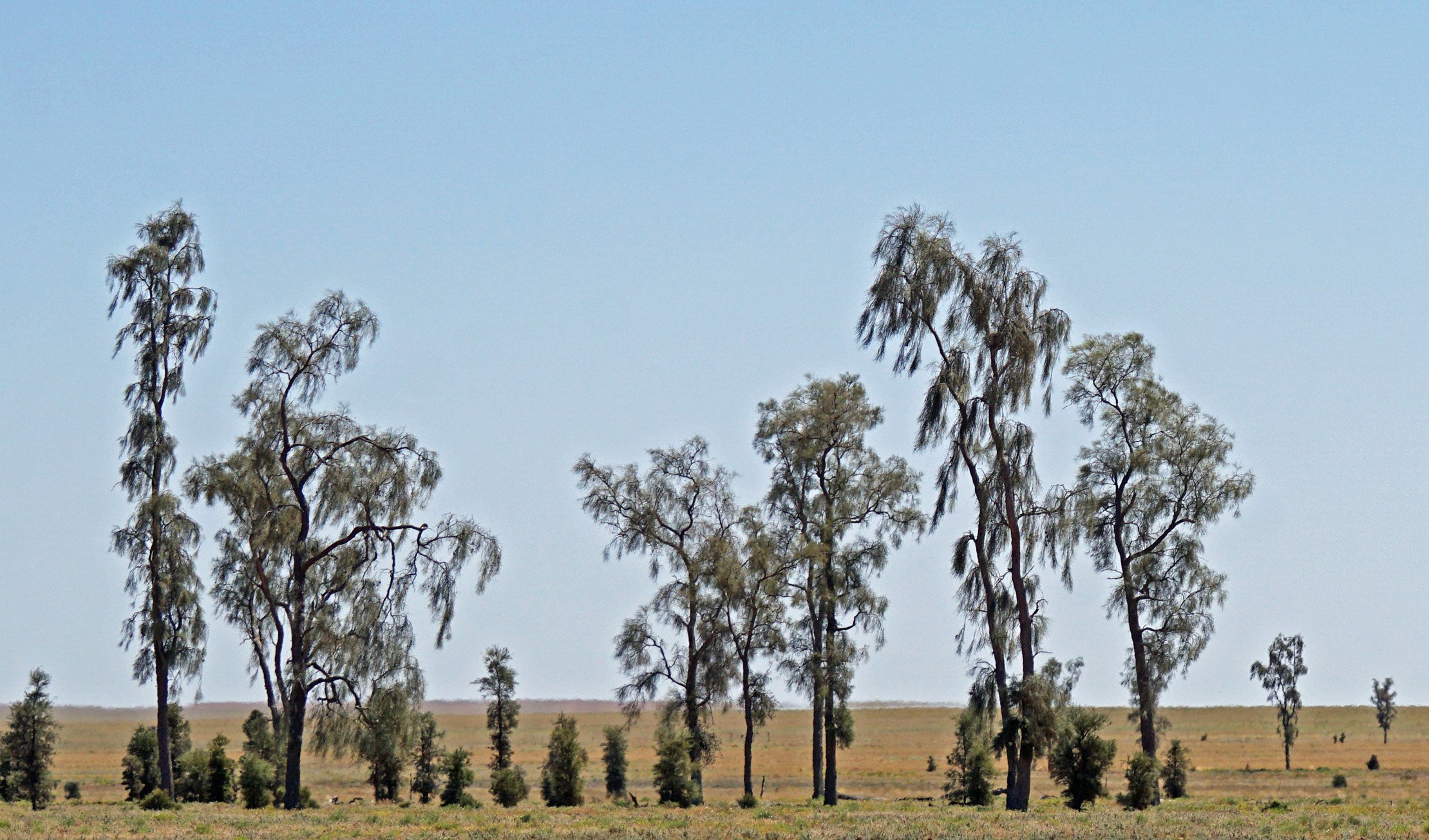Australia’s Doctor Seuss Tree

IT SHOULD BE FAMOUS but most Australians have never heard of waddywood (Acacia peuce). It’s an odd desert wattle that looks more like a shaggy pine. Its circle of admirers would be larger if it didn’t grow in remote places, but that is part of its appeal.
To touch one is to connect to a time when diprotodons and other extinct megafauna lumbered across the land browsing shrubs and trees. The lower foliage is rigid with spiny tips, while a few meters up – out of megafauna reach – the foliage is softer and friendlier. The megafauna inhabited all of Australia so plants armed against them should be everywhere, but examples as dramatic as waddywood are few and far between. It is spiny in a busier, more crowded way than the spiny acacias in Africa, which helps make it interesting.
Waddywood is rare. It survives in three colonies, found hundreds of kilometres apart on the fringes of the Simpson Desert, two on the eastern side, around Boulia and Birdsville in Queensland, and one in the Northern Territory near Andado Station. No other plant is placed like this. Dating of sand grains shows that the Simpson Desert began forming only about a million years ago, as sand smothered a vast plain, which was probably the main waddywood habitat, leaving a few remnants stranded around the edges. This tree’s lack of close relatives suggests it evolved far more than a million years ago.

(Image Credit: Lisa Nunn/Ninox Photography)
It is hardy enough for desert life, but the younger trees are very vulnerable to fire. The thick spiny foliage of saplings eventually dies but doesn’t readily fall off. When a grass fire reaches a young waddywood tree the skirt of dry foliage explodes into flame and kills the tree. Fires are considered a major threat to the species. Waddywood belongs to a past when there was less fire, or to a past when the megafauna, despite the spines, nibbled off enough low foliage to reduce its flammability. We know from Africa that spines reduce rather than stop browsing.
Waddywood is jokingly called the Dr Seuss tree because it can look slightly comical, with some branches at odd angles and the foliage drooping as if melting. It stands out because its surrounds are so barren, devoid of other woody plants. It defies the general rule that shrubs are better at surviving in deserts than trees. Aboriginal people regard it as sacred, and because it always looms up out of nowhere I can well understand why.
It is important to wildlife because it is a tree in places that otherwise lack them. On a recent visit to the Northern Territory I saw woodswallows roosting on branches, and nests of rare letter-winged kites in the upper canopy. Birds that nest in smaller waddywood trees benefit from the spiny skirt at the base that keeps away feral cats.
Waddywood has been called ‘Australia’s loneliest tree’. It is one of my favourite plants and I have made two pilgrimages to see it, and hope to meet up with it again some day.
READ MORE:




